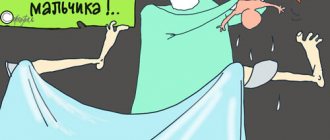.
There are many different phobias in the world, some common (fear of heights) and some quite rare and incomprehensible. One of these is the fear of being photographed. This problem occurs in only 1% of people, but it still exists and has its own symptoms and treatment methods.
Body dysmorphic disorder affects one in 100 people
In the modern world, we see cameras everywhere: in shopping centers, on roads, in entrances and even in public transport. People who experience such fear find it much more difficult to lead ordinary lives. The fear of being photographed is often just a symptom of a more serious syndrome called body dysmorphic disorder, which has various causes.
Concept and causes of dysmorphophobia
Bodysmorphophobia syndrome consists of dissatisfaction with one's appearance; it is a fear of the imperfection of one's body. This fear is also called dysmorphomania. Dysmorphophobes attach too much importance to their shortcomings, so they do not like to look in the mirror and are afraid to be photographed.
Causes of dysmorphophobia:
- Lack of parental love in childhood. Some parents pay too much attention to their child's appearance, but do not show enough love for him. As a result, the child begins to think that if he does not look perfect, then no one will love him.
- Ridicule from other teenage peers is the most common reason. Most often, this syndrome of dissatisfaction with one's appearance occurs in adolescence. After all, it is among teenagers that excessive criticism, cruelty and intolerance towards their peers are found.
- Genetics. It has been noted that this phobia is often found in those people whose relatives suffered from such a phobia.
- Ideal images on television and on the Internet. On TV and on the Internet we are shown people with ideal appearance. And many, especially teenagers, begin to have complexes about their own appearance, which is far from ideal. Girls torture themselves with diets to achieve an ideal figure, and guys spend all their time in the gym in pursuit of muscle mass.
- Mystical reasons. There are people who are convinced that every photograph takes away a part of their soul. Such people believe that when the limit of photographs is exhausted, they may die. Others believe that ill-wishers can spoil them through the image in the photo, etc.
Causes of fear
The cause of fears is most often dysmorphophobia (dysmorphia) - a mental disorder in which a person is fixated on some flaw or feature of his body. This feature is usually invisible to others, but because of this individual trait he developed complexes. He is afraid of filming and deliberately avoids it. A person believes that his shortcomings will be visible on film and everyone will laugh at him.
A person with this phobia experiences fear at the sight of a camera and asks to put it away.
Sometimes a painful condition occurs against the background of excessive modesty. A person does not like to be seen, avoids noisy companies, and becomes embarrassed in an uncomfortable situation. Most often, these complexes are characteristic of introverts or people suffering from social phobia.
There are people who believe that a portrait can bewitch a person, put the evil eye on him, cause damage and even destroy him. This is the esoteric cause of fear.
Famous actors avoid filming because they don’t want everyone to know about their personal life.
Symptoms
How can you immediately identify a person who suffers from dysmorphophobia, because almost every person is dissatisfied with something in their appearance. There are signs that help determine the presence of a phobia:
- Strange attitude towards mirrors. Most people suffering from this phobia do not like to look in the mirror and try to avoid all surfaces in which they can see their reflection. They dislike their appearance so much that looking in the mirror is a big stress for them. But there are also people who are constantly looking for a mirror and trying to find an angle that will hide their flaw.
- Hate being photographed. Such people avoid the opportunity to be photographed, coming up with various reasons, because it seems to them that this way their disadvantage will become even more noticeable and will remain in memory for many years.
- They are trying to divert attention from the shortcoming. To do this, they choose unusual and sometimes strange things and accessories.
- They resort to plastic surgery. Many of them turn to a plastic surgeon for help, but usually this does not help, dissatisfaction with their appearance does not disappear, and the desire to change their appearance only increases.
- They become social phobics. Some individuals want to hide their shortcomings from everyone so much that they begin to avoid meeting people and communicating with others.
- They are actively trying to hide the defect. If the problem is on the face, then the person applies a huge amount of makeup or wears glasses. If it’s about his figure, then his entire wardrobe consists of baggy things.
The patient tries to hide the defect under clothes and glasses
Definition of body dysmorphic disorder
A pathological fear of being photographed is diagnosed in those who are critical of their appearance. There are no signs of obvious deformity in their appearance. These unfortunate people live in their own depressive world. They are afraid to even look in the mirror. People who are afraid to be photographed consider themselves unattractive and avoid social contacts because they do not want to be ridiculed in society.
They are afraid of photographs that someone may not like, rarely admit their weaknesses and do not seek help from specialists.
Such people become depressed and suicidal.
Everyone is dissatisfied with their appearance: they want to reduce their nose, get rid of a double chin or become slimmer. It `s naturally. If dissatisfaction with oneself becomes the cause of depression, fear, panic, isolation, then a phobia can be assumed. It prevents a person from enjoying life. A psychotherapist will help you cope with the painful condition, and in severe cases, a psychiatrist.
Suspiciousness is a sign of dysmorphophobia
Penile dysmorphophobia
Bodysmorphophobia syndrome can occur due to dissatisfaction with different parts of the body, but among men the most common is penile dysmorphophobia - dissatisfaction with the size or shape of the penis.
Causes:
- criticism and ridicule, especially from the opposite sex;
- demonstrating the importance of penis size for a man on television and on the Internet.
In modern medicine, there are procedures that can change the size of the external genitalia. But in most cases there is no reason for this, because all the problems are in the head.
Treatment of dysmorphophobia
At the initial stage of the disease, it is possible to overcome fear on your own. In this case, the support of loved ones, focusing on strengths, as well as new activities and hobbies will help. The main thing here is to distract your thoughts from a problem that most likely either does not exist or does not deserve such increased attention. If the phobia has become serious, then the help of a specialist is needed. Only a psychotherapist can select the right medications, mainly antidepressants, and conduct the necessary conversations and trainings. For a disease such as body dysmorphic disorder, treatment is very important and necessary, because an advanced disease can lead to suicide.
Often body dysmorphomania is a symptom of a more serious mental disorder. That is why before starting treatment, it is necessary to fully check the patient’s mental state.
People with this symptom have low self-esteem, and the therapist must take the necessary measures to increase it. Various methods are used to treat dysmorphophobia - NLP, hypnosis, as well as ordinary conversations.
Types of dysmorphophobia
Experts distinguish two types of painful conditions: muscle dysmorphophobia and penile dysmorphophobia. These mental disorders vary, but have much in common.
Muscle dysmorphophobia, according to some experts, is the opposite of anorexia. People with this phobia believe that their physical fitness is less than ideal. They are obsessed with constantly improving their body - they spend all their free time in the gym, and are obsessed with enhanced nutrition. For such people, skipping a workout means cheating on yourself. Bodybuilders often suffer from this phobia. They try to hide their “imperfect” body under loose clothes and work out intensely. A painful condition can be successfully treated if it is not advanced and the patient is aware of his problem.
Reluctance to show imaginary shortcomings
The term “penile dysmorphophobia” has recently appeared in the dictionary of andrologists. This is due to the fact that there are more people who are unhappy with the shape, appearance or size of the external genitalia. Among these patients there are also women who do not like the appearance and size of the labia minora. Penile dysmorphophobia is not included in the classification of mental and behavioral disorders adopted by the World Health Organization. This term is taken from clinical psychiatry. It denotes a painful attitude towards a real, but small defect, which even specialists may not notice if you deliberately do not pay attention to it. Fears about their appearance prevent such patients from living a full life. A phobia can cause dysmorphomania, and this is a serious deviation.
People with this phobia try to hide from everyone, hide at home. They are afraid that others will notice their imagined inferiority.
How to photograph a person with body dysmorphic disorder
In such a situation, the photographer must win over the model by first talking with her, but without touching on the topic of his shortcomings. Only a professional photographer can take photographs that will turn a person’s shortcomings into his strengths. You need to convince the model to trust a professional.
Everyone knows that a disease is easier to prevent than to cure, and body dysmorphic disorder is no exception. This syndrome usually appears in adolescence, and to avoid the disease, it is necessary to explain to the teenager that beauty is a relative concept.
Each nation has its own concept of beauty, but the natural beauty of each person is unique. It is important to explain to a teenager that external and internal beauty are halves of one whole. It is also important for a teenager to build relationships with peers correctly and to be able not to react painfully to criticism of external data.
Treatment of the disease
Self-treatment of dysmorphophobia does not produce results. The specialist must analyze the causes of the painful condition and choose the most appropriate methods and methods of treatment. First, it is necessary to eliminate the original sources of the problem, i.e. mental disorders. Here you need the help of a psychotherapist or psychiatrist, who will help even introverts open up.
Experienced photographers will also help you overcome this painful condition. They are able to photograph a person so that his imaginary and real shortcomings will not be noticeable. The professional simply will not take pictures that the patient does not like. As a result, the person will no longer be afraid of the camera and will not react painfully to it.
It is easier to prevent the development of a painful condition. During adolescence, a person begins to be critical of his appearance and notice all the shortcomings. Parents should explain to children that every person has a unique appearance. Then they will not face dysmorphophobia syndrome.
There are many different phobias in the world, some common (fear of heights) and some quite rare and incomprehensible. One of these is the fear of being photographed. This problem occurs in only 1% of people, but it still exists and has its own symptoms and treatment methods.
Body dysmorphic disorder affects one in 100 people
In the modern world, we see cameras everywhere: in shopping centers, on roads, in entrances and even in public transport. People who experience such fear find it much more difficult to lead ordinary lives. The fear of being photographed is often just a symptom of a more serious syndrome called body dysmorphic disorder, which has various causes.












